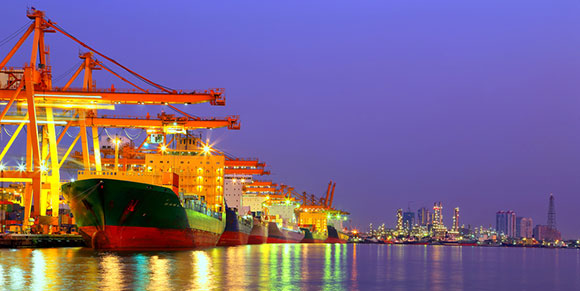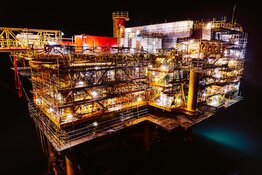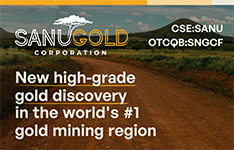The Energy Report: As editor-in-chief of Oil and Gas Investor, based in Houston, you follow the development of U.S. shale closely. Is the U.S. really on track to energy independence, or will depletion rates cut this boom short? What are the production numbers telling you?
Leslie Haines: I have been covering shale development since 2005, and it looks like we are on track for energy independence by 2020 or so. However, we're never going to stop importing oil because supply diversity is prudent.
Depletion rates are significant in every shale play. Some of the depletion rates are quite steep in the early years of a play, but wells tend to produce for 20 years or so at a lower rate, so overall production rates are still growing.
"We're never going to stop importing oil because supply diversity is prudent."
The monthly U.S. Energy Information Administration (EIA) reports show that in H1/14, U.S. gas natural production alone increased by more than 4 billion cubic feet a day (4 Bcf/d). The bulk is coming from the Northeast, from the Marcellus and Utica plays in Pennsylvania, Ohio and West Virginia. Also, a lot of new natural gas is coming on, in association with oil production in West Texas, in the Permian Basin, and in south Texas, in the Eagle Ford play. While some gas areas might be declining, we're getting enough new natural gas to offset that decline. In fact, both oil and natural gas production in this country are the highest they've been in about 35 years.
Natural gas in storage was down last year, and now we're refilling. Every summer and fall, you refill storage to prepare for winter. It looks like we're going to have a lot of gas in storage. We've had a fairly mild summer and haven't had a huge call for natural gas for air conditioning, compared to what it could have been. Between the production and the weather factors, it looks like we'll have plenty of gas in storage for the fall.
TER: How will the development of monster wells, as they're being called, impact that balance?
LH: When we say monster well, we are referring to an above-average initial flow. We're seeing this happen in the Utica play in West Virginia and southern Ohio. Some very large dry-gas wells are being reported with initial flows of 20–25 million cubic feet of gas a day (20–25 MMcf/d). That's a huge gas well by anybody's measure. It is just one more example of U.S. production surging due to horizontal drilling and fracking. Those two techniques combined have revolutionized everything in this country and allowed us to recover a lot more of the underground reservoir.
TER: The techniques continue to develop as more environmentally friendly and efficient methods are discovered. What are some new techniques you are seeing?
LH: The size of the average frack is getting quite a bit bigger. It used to be that the horizontal leg might only go out 1,000–2,000 feet (1,000–2,000 ft). Now, it's going out as far as 5,000–7,000 ft horizontally, so the well bore is exposed to more of the reservoir. The size of the fracks has also gotten bigger, with 20 or 30 frack stages along a lateral. That has increased production.
"Both oil and natural gas production in this country are the highest in about 35 years."
In one basin, you may find the number of formations that can be tapped is quite numerous. In the Permian Basin of West Texas, for example, more than 5,000 vertical feet of pay can be tapped. If you sink three horizontal legs into that well, three different horizons can be fracked and produce from one well. It triples the effect of that well and acreage.
TER: What's an example of a company taking advantage of that multiplier effect?
LH: Two good examples are Pioneer Natural Resources Co. (PXD:NYSE) and Concho Resources Inc. (CXO:NYSE) in the Permian Basin. Production is soaring. In fact, Pioneer is one of the companies that recently received special permission from the government to export a little bit of condensate as a test case. Pioneer is a very active proponent of exporting crude.
TER: Is the company testing price impact, or market demand, or something else?
LH: All of the above. The company is trying to prove to the government that we need to be able to export crude oil in addition to refined products like gasoline. It is very controversial.
TER: In the absence of exporting, are we producing too much? The EIA's Weekly Natural Gas Storage Report showed 2,801 Bcf at the beginning of September. Is oversupply keeping the price of natural gas down?
LH: A lot of Wall Street analysts have reduced their outlooks for oil and gas pricing—and company earnings projections—through the rest of this year and into next year. For example, Bernstein Research just came out with a report in which it is bringing down its natural gas price estimate for 2015 from $4.50/thousand cubic feet ($4.50/Mcf) to $4/Mcf. It plans to leave the price there through 2016.
We are seeing such an incredible surge in supply of both oil and gas that producers, analysts and investors are starting to get a little bit worried. We had very high natural gas prices a few years ago, and then the surge of new production, combined with a mild winter, made the price of natural gas go right back down. At one point, natural gas was below $4/Mcf. It's come back a little this year, but there is still quite a bit of concern.
TER: Are today's prices less than what it costs to pull the oil out of the ground?
LH: Producers are still making money, but the prices for drilling and fracking are inching up because there's so much demand for wells to be drilled and fracked.
TER: You sat on a panel at the Stansberry Society conference in Dallas with S&A Resource Report newsletter writer Matt Badiali earlier this year to talk about the future of shale. He divides the shales into mature (the Bakken and the Eagle Ford), and developing (the Tuscaloosa, Utica and Cline areas). Are investors rewarding companies with shale play diversity, or is it considered smarter to master one shale type?
LH: The stock market used to reward companies for diversity. Investors wanted to see a balance between oil and gas, and two, three or four different project areas. However, that has changed. Now investors favor pure-play companies. A company like Oasis Petroleum Inc. (OAS:NYSE), which is in just one play, the Bakken, has done very well in the last year.
"There is an enormous demand for rig crews, frack crews and all the associated equipment and materials."
Sanchez Energy Corp. (SN:NYSE), which is in the Eagle Ford and Tuscaloosa Marine Shale, is not being rewarded for the Mississippi project yet. The Tuscaloosa play is still developing, and hasn't proven to be economic yet. The company has some expensive wells with downhole technical challenges. The players in that area are still working on solving the geology. In the Eagle Ford, however, Sanchez is very experienced and successful. That part of its business is well recognized.
But, in general, I would say that diversity is not being rewarded in the market at this time. It's better for companies to focus on two or three plays at the most, and in well-established areas like the Bakken, the Eagle Ford and the Marcellus.
TER: Are there still upside opportunities in the established shales?
LH: The Marcellus Formation is considered the second largest gas field in the world. Production keeps growing every quarter. It's difficult for a company to get in there now. Most of the lease positions are already carved out. Companies have gone beyond finding the sweet spots, and are focusing on two things. One is how to drill a more efficient well faster, while reducing costs. The other is infrastructure. The Marcellus and Utica plays are constrained because there is not enough pipeline to get all the gas to market. A ton of midstream projects have been proposed and are underway. Billions of dollars are being spent to build pipeline infrastructure to move the gas not only to the population centers in the northeast, but also to eastern Canada. Some of the gas is going to be piped down to the petrochemical plants on the Gulf Coast. Some of the gas is even being piped to the West, to Chicago and beyond.
TER: This sounds like more of a manufacturing operation, now that companies don't seem to be drilling dry holes anymore. Who are the main players?
LH: Companies like Cabot Oil & Gas Corp. (COG:NYSE), Range Resources Corp. (RRC:NYSE), Chesapeake Energy Corp. (CHK:NYSE), Petroleum Development Corp. (PETD:NASDAQ) and EQT Corp. (EQT:NYSE) are doing quite well in the Marcellus. The same thing is true in the Bakken, the Eagle Ford and the Permian Basin. Some 20 companies may drill a play, but a handful do most of the work. And they are the bigger companies.
TER: Do you envision mergers and acquisitions in that space, as some of these companies mature?
LH: It's really about the play maturing. We see a similar pattern in every shale play. Companies decide that a play is relatively mature, and that they can make a higher return somewhere else. They put their assets on the market, sell to somebody else in that play or to a master limited partnership (MLP), and then redeploy their money into another play that might have a faster growth trajectory.
TER: What is a recent example of that?
LH: Marathon Oil Corp. (MRO:NYSE) sold its North Sea assets to redeploy more capital to the Eagle Ford, which has much higher returns.
TER: You wrote a September cover story on service and supply companies, which is one way investors are leveraging the oil and gas industry. Are margins increasing in that business?
LH: It looks like they're about to, yes. Almost 1,900 rigs are drilling in this country at any given time. I'd say 90% of those wells will need to be fracked. That is an enormous demand for rig crews, frack crews and all the associated equipment and materials. Last year, about 17 million hydraulic horsepower was installed. The amount of horsepower available for fracking has probably doubled in the last five years. Everything is bigger, longer, higher pressure—more, more, more. Service companies have pricing power because there is such a frenzy of activity right now.
TER: There are many types of service companies. Is there one part of that industry that's growing faster than the others?
LH: One bright spot is in companies that provide sand for fracking. They've been doing extremely well in the marketplace. Their stocks are way up, and they keep adding new capacity, to deliver yet more sand to the marketplace for fracking. The oil field service index, PHLX Oil Service Sector (OSX:NASDAQ), has risen steadily since January, and the hottest subsector seems to be the frack sand providers. Some of them have tripled in the past 12 months.
TER: What are some examples of solid frack sand providers?
LH: US Silica Holdings (SLCA:NYSE), Hi-Crush Partners LP (HCLP:NYSE) and Emerge Energy Services LP (EMES:NYSE) are three. Their revenues mirror the increase in drilling activity, which could be 14% in the next year. That is why analysts are telling us that it looks like profit margins have come off their lows, and service prices are starting to rise again.
TER: Thank you for taking the time to talk to us.
LH: Thank you.
 Leslie Haines is editor-in-chief of Oil and Gas Investor magazine. She began her journalism career in 1980 in Williston, North Dakota, at the Williston Daily Herald. She was the energy and business reporter for the Midland Reporter-Telegram in Midland, Texas, in 1982 and 1983. She joined Hart Energy Publishing in Denver in late 1983 as a copy editor. Soon thereafter she began writing for Western Oil and Gas World. In 1985, she joined the staff of Oil and Gas Investor magazine. She was named managing editor two years later, and became editor in January 1992. In November 1992, the Independent Petroleum Association of America awarded Haines with the 2nd Annual Lloyd Unsell Award for Excellence in Petroleum Journalism. She is a former president of the Houston Producers' Forum, and is on the board of the Houston Energy Finance Discussion Group.
Leslie Haines is editor-in-chief of Oil and Gas Investor magazine. She began her journalism career in 1980 in Williston, North Dakota, at the Williston Daily Herald. She was the energy and business reporter for the Midland Reporter-Telegram in Midland, Texas, in 1982 and 1983. She joined Hart Energy Publishing in Denver in late 1983 as a copy editor. Soon thereafter she began writing for Western Oil and Gas World. In 1985, she joined the staff of Oil and Gas Investor magazine. She was named managing editor two years later, and became editor in January 1992. In November 1992, the Independent Petroleum Association of America awarded Haines with the 2nd Annual Lloyd Unsell Award for Excellence in Petroleum Journalism. She is a former president of the Houston Producers' Forum, and is on the board of the Houston Energy Finance Discussion Group.
Want to read more Energy Report interviews like this? Sign up for our free e-newsletter, and you'll learn when new articles have been published. To see recent interviews with industry analysts and commentators, visit our Streetwise Interviews page.
DISCLOSURE:
1) JT Long conducted this interview for Streetwise Reports LLC, publisher of The Gold Report, The Energy Report, The Life Sciences Report and The Mining Report, and provides services to Streetwise Reports as an independent contractor. She owns, or his family owns, shares of the following companies mentioned in this interview: None.
2) Leslie Haines: I own, or my family owns, shares of the following companies mentioned in this interview: None. I personally am, or my family is, paid by the following companies mentioned in this interview: None. I was not paid by Streetwise Reports for participating in this interview. Comments and opinions expressed are my own comments and opinions. I determined and had final say over what companies would be included in the interview based on my research, understanding of the sector and interview theme. I had the opportunity to review the interview for accuracy as of the date of the interview and am responsible for the content of the interview.
3) The following companies mentioned in the interview are sponsors of Streetwise Reports: None. The companies mentioned in this interview were not involved in any aspect of the interview preparation or post-interview editing so the expert could speak independently about the sector.
4) Interviews are edited for clarity. Streetwise Reports does not make editorial comments or change experts' statements without their consent.
5) The interview does not constitute investment advice. Each reader is encouraged to consult with his or her individual financial professional and any action a reader takes as a result of information presented here is his or her own responsibility. By opening this page, each reader accepts and agrees to Streetwise Reports' terms of use and full legal disclaimer.
6) From time to time, Streetwise Reports LLC and its directors, officers, employees or members of their families, as well as persons interviewed for articles and interviews on the site, may have a long or short position in securities mentioned. Directors, officers, employees or members of their families are prohibited from making purchases and/or sales of those securities in the open market or otherwise during the up-to-four-week interval from the time of the interview until after it publishes.











































